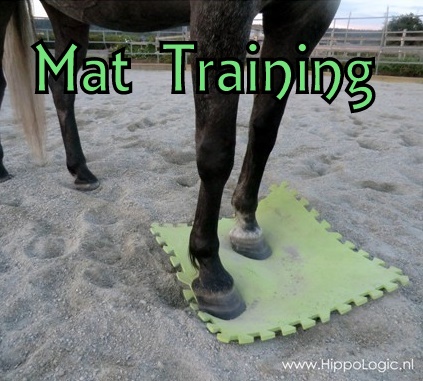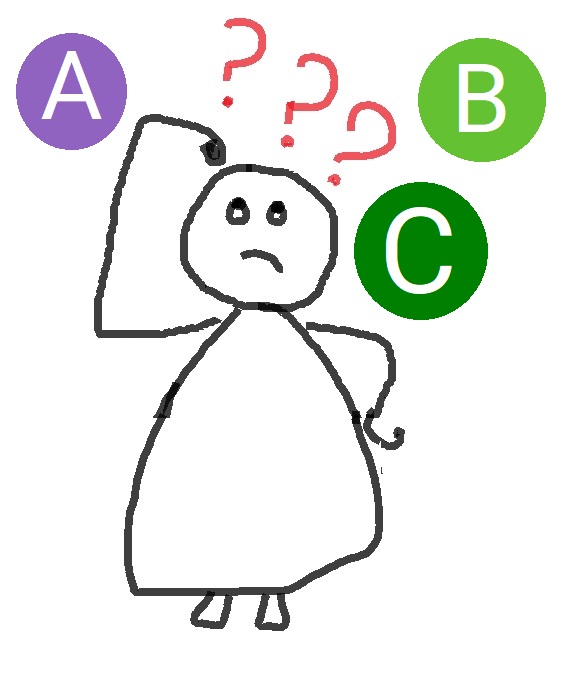Welcome to a new world of training, communicating with your horse and cultivating friendship in training.
When you want to become successful in a (any) new skill, this is what I recommend as being a coach for the last few decades.
#1 Learning a new skills asks for a Teacher
Find a coach. Preferably 1 (one) coach/approach!
Why am I mentioning this? When you seek out multiple teachers/coaches you’ll get very confused as your knowledge is not yet that deep and you won’t recognize that they might all talk about the same thing (clarity for the horse). Chances are you’ll get confused: “But the other coach recommended [A} and you’re recommending [B]”
They are both letters in the alfabet, you both need them to communicate. Maybe the order of teaching your horse things matter. As a beginner you don’t know this. 😉
When you’re looking for free information, books, videos, blogs, an online course, I would recommend: follow and apply 1 coach/approach (with a bit of a risk of implementing it wrong and confusing yourself and your horse since this is a one way street. No one evers learns to ride a horse from reading a book)
A like-minded, critical friend who wants to learn this as well can also be a good start. By discussing what you learn, asking critical questions (5 times WHY is a good technique) and following your gut. heart
#2 Basics first! HippoLogic Key Lessons in Clicker Training
Start simple! Basics first.

It’s enticing to go after your dream behaviours first (just like in riding you might dream of trail riding or winning competitions), but setting yourself and your horse up for success is by starting practising the basics.
I always start with teaching horse and trainer (owner) the 6 Key Lessons for Horses, your Keys to Success in Clicker Training. I also teach 6 Keys to Success for TRAINERS. Skills that makes you a success.
Like keeping track of your training so that you can find what you’re doing well (and do more of that) and things that led to undesired behaviours/results and changes those.
Start with the most important basic behaviours:
- Key Lesson Table Manners: teaching your horse safe behaviour around food and treats in training.
- Key Lesson Patience: teaching your horse to wait for your cues and >>Relax<<. Many horses get really, really excited when they discover there is food involved! See Key Lesson #1
- Key Lesson Targeting. In targeting you teach your horse to touch a specific object (target) with a specific body part (usually the nose). With targeting you have a super simple exercise that will become very valuable in training almost all future behaviour.
- Key Lesson Mat Training. This is targeting for the feet. You teach your horse to step onto a mat. Then you can teach ‘stay’ (ground tying), go over to the other mat (sending your horse away from you and your treats without chasing him off, creating more space between you and your horse to increase safety and so on)
- Key Lesson Head lowering. This is important for tall horses and teaching them to self halter and put their heads into the nose band themselves. Also for medical issues like eye, ear, nose checks etc. Head lowering can also help calm a freaked out horse down and helps you determine how high his anxiety is (they won’t lower their heads and it’s feedback, you can ask for Key Lesson Patience)
- Key Lesson Backing. This can increase safety (they can’t mug if they can’t reach your pocket, which ties into Key Lesson Table Manners), it can also help making your horse more athletic, or back out a trailer safely.
The Key Lessons for Horses are like LEGO blocks: you can train all future behaviours with these foundation behaviours. You can teach your horse to be brave and calm around new objects (Key Lesson Targeting, Patience, Head Lowering) and make him bomb proof for trail rides. A coach can see the whole road (And alternative routes too), where a student sees the destination (end goal)
Then I teach 6 skills for Trainers, it will be a bit too much for here and I don’t want to overwhelm you.
#3 Clarity for you and your horse
Make sure your horse understands what is happening and what he can expect: having a clear “start clicker training ( meaning: food involved!🥳🥳🥳) session”- signal and a clear “End of clicker training session”-signal (no more treats after this signal🛑) Is one of the most important communication you can give your horse.
Most horses become (overly) excited that they finally get something they value and they don’t want you to stop! There is food involved! (As you know they eat up to 16 hours a day, so they don’t get easily satisfied by just the food)
One tip that will help with Clarity is to start clicker training only in 1 specific place until the basics and the start/end signal are learned. That way, if things do go sideways, you can simply avoid that training spot until you found a solution/support to overcome that specific issue.

It helps you keep doing the other things/ training techniques ‘pure’ that you already have going. Riding in the traditional way is based on negative reinforcement (pressure-release) and by not bringing clicker training (positive reinforcement and food) into the context of riding you can still keep riding like always, without your horse mugging for treat under saddle.
#4 Consistency
Make sure you train consistently one behaviour before training another new thing, and another. When you notice this happens, you probably have a hole in your training, you get stuck (but don’t realize it) and therefor you go to the next thing/behaviour.
The “Shiny Behaviour (Object) Syndrome” is also a tempting pitfall: you’re working on mastering the basics and you see someone else working on lying down, Spanish walk or something else that excites you. You want to try that, forget your basics and will get stuck. The same with riding, when a rider isn’t able to control the horses speed, or the placement of the back feet under the mass, asking the horse for a piaffe will fail. None likes to feel like that

Knowing that you will encounter this temptation, will help you resist until you and your horse master the basics and you have improved your chances to be successful at that dream behaviour!
#5 Follow your Instincts and Listen to your Gut
I’ve found that many horse owners do know their horse best. When they have the slightest feeling their horse doesn’t like something or gets frustrated, they usually are right!
Trust your feelings!
Many of us are programmed to ignore those feelings. We’ve been told “the horse doesn’t mean it” or” he won’t bite” when he’s flattening his ears or is girth sour. Horse’s are never ‘acting’ (that’s more a human thing) Know your species!🐴
Training hundreds of horses and hundreds of horse people, taught me that the quickest and safest way to success is: Master The Basics First!
Bonus Tip
Find your new tribe! Before clicker training your horse, you belonged to the tribe of traditional horse people or the tribe of Natural Horsemanship people. When you slowly but surely change your ways, you won’t (fully) belong to that tribe anymore.
Start looking around for your new tribe: with other clicker trainers, people who understand that you can train your horse safely (!) with food and gentle ways, without having to dominate or coerce your horse into behaviours.
Happy Horse training!
Sandra

New to Clicker Training?
Get my Confident Clicker Trainer course, an high quality, extended online program that teaches you to clicker train your horse.
No matter when you’re new or already advanced (clicker training 2-6 years) this course will offer you many new angles and approaches to enhance and deepen your skills.
You’ll get:
- My proven R+ training step-by-step system that gives you predictable results (It tells you when and how to introduce a cue, when and how to strengthen a behaviour, raise your criteria and get behaviour under stimulus control and so on)
- Includes 6 Keys to Success for Trainers from creating Accountability to Shaping plans
- 8 Modules to teach your horse 6 basic behaviours, the Key Lessons for Horses, that will help you train all future behaviours faster
- Tons of instruction and step-by-step training videos

Need some hand holding and personal support?







Pingback: How to Start Clicker Training my Horse? – HippoLogic Clicker Training Academy